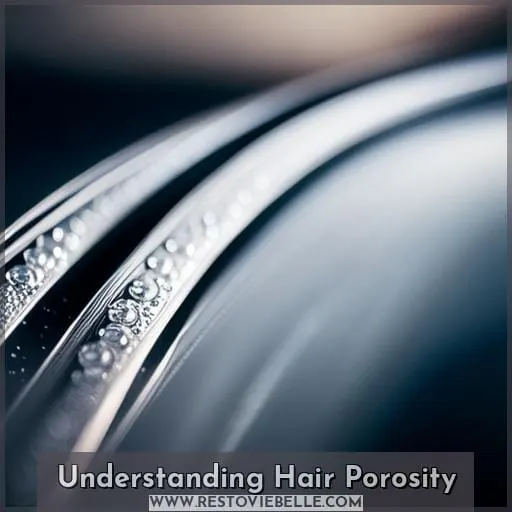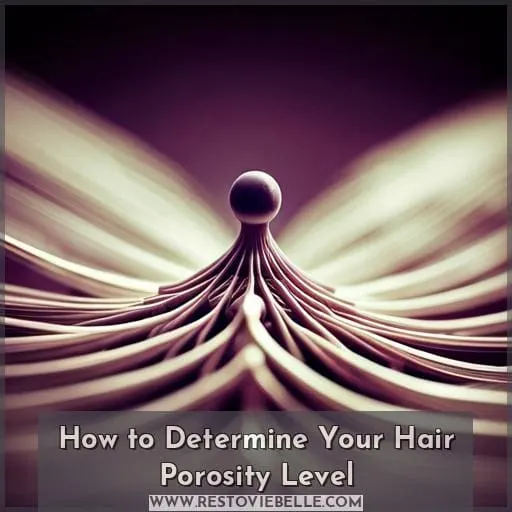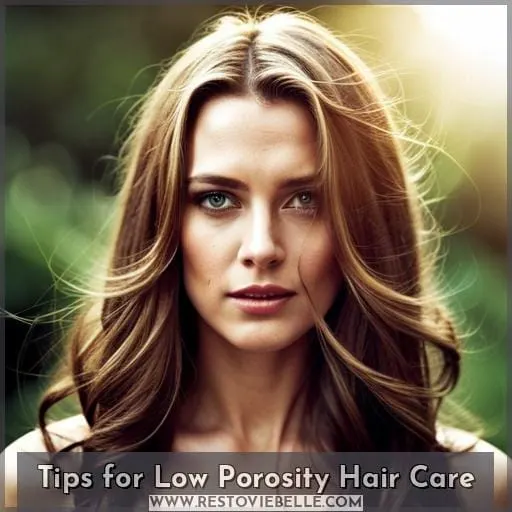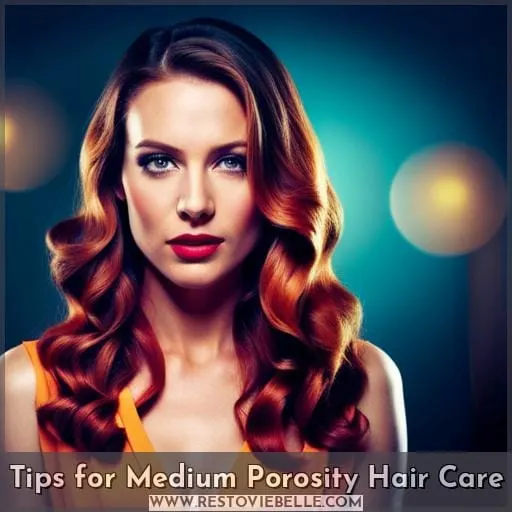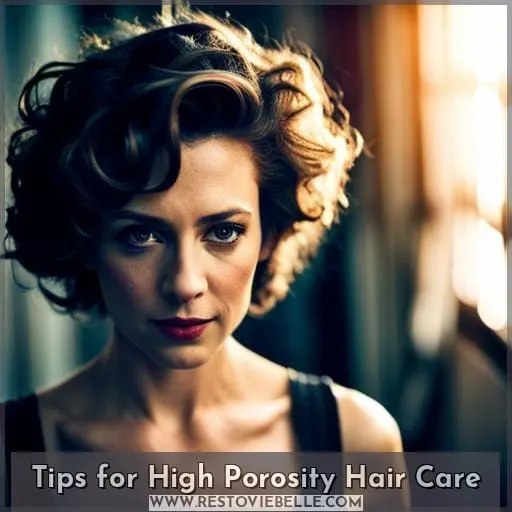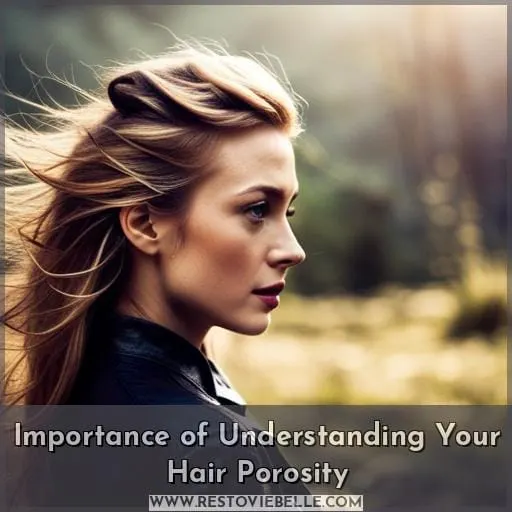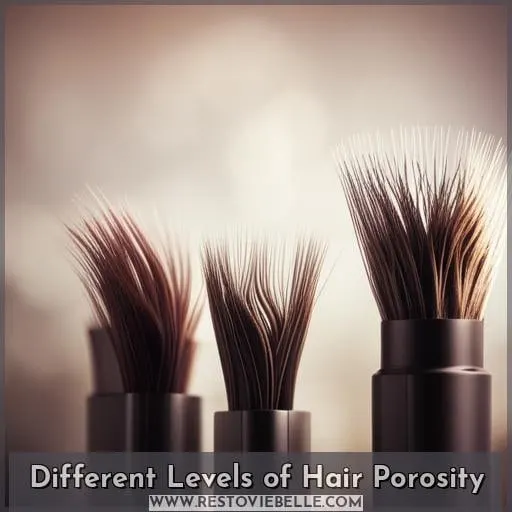This site is supported by our readers. We may earn a commission, at no cost to you, if you purchase through links.
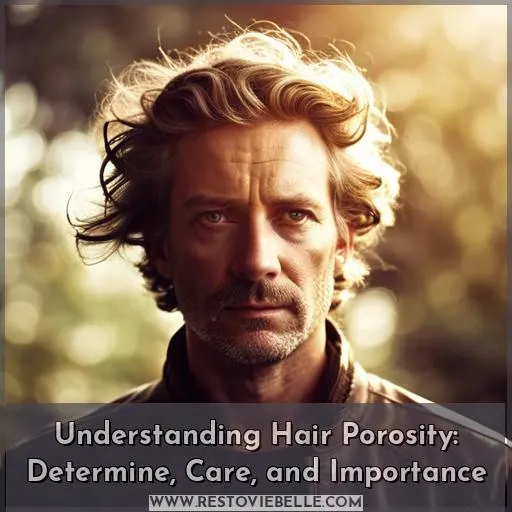 Are you curious about your hair’s porosity? Understanding the concept of hair porosity is essential for maintaining healthy, beautiful locks. Hair porosity refers to how easily moisture can enter and exit the outermost layer of your strands – known as the cuticle.
Are you curious about your hair’s porosity? Understanding the concept of hair porosity is essential for maintaining healthy, beautiful locks. Hair porosity refers to how easily moisture can enter and exit the outermost layer of your strands – known as the cuticle.
The level of porosity affects how well oils and moisture are able to pass in and out, making it an important factor when it comes to determining what kind of products you should use on your hair.
In this article, we’ll cover what exactly determines your hair’s level or degree of porosity, tips for caring for different levels such as low or high, plus why understanding this information is so important!
Table Of Contents
- Key Takeaways
- Understanding Hair Porosity
- How to Determine Your Hair Porosity Level
- Tips for Low Porosity Hair Care
- Tips for Medium Porosity Hair Care
- Tips for High Porosity Hair Care
- Importance of Understanding Your Hair Porosity
- Different Levels of Hair Porosity
- How to Care for Your Specific Porosity Level
- Conclusion
Key Takeaways
- Hair porosity determines moisture absorption and product suitability.
- It is categorized into low, medium, and high levels.
- Understanding porosity is crucial for product selection.
- Different porosity levels require different care and styling techniques.
Understanding Hair Porosity
By becoming aware of your hair’s porosity, you can unlock its potential for improved moisture absorption and retention. Hair porosity is determined by the cuticle layer which surrounds each hair strand.
Understanding how this works helps to inform both product selection and application methods for optimal results.
Porosity testing will help identify whether a person has low, medium, or high porosity so they can purchase products best suited to their needs. Additionally, external factors such as UV exposure or bleaching should be taken into account when assessing overall moisture balance.
It’s important to note that there are many myths about hair types being ‘good’ or ‘bad’.
For people with low-porous strands, using butters/oils may lead to too much excess build-up on the scalp. On the other hand, those with higher levels of porosity might benefit from protein treatments applied before conditioning heat therapies like steamers.
These treatments open up the cuticles, enabling product absorption more efficiently.
With knowledge comes power. Learning about your own unique level of pore density provides useful insight into how you can most effectively manage curly locks, giving them an extra boost of body and shine!
How to Determine Your Hair Porosity Level
Start your journey to discover the perfect hair routine for you by determining your porosity level! Knowing and understanding your hair’s ability to absorb and retain moisture is key in developing an effective haircare regimen that works best for you.
Porosity testing involves assessing the cuticle layers of each strand of hair, which can reveal information about its structure and how it will respond to products. The three levels available are low, medium, and high porosity; each having their own unique characteristics based on their ability or difficulty in absorbing moisture.
To determine what type applies most accurately to you, try using a float test with water-soaked strands of clean, dry hair. Alternatively, you can use a spray bottle misting technique. Lightly sprayed sections should curl up if they have low porosity level, remain relatively straight/flat if they have medium porosity, while highly porous strands will start curling up right away after being sprayed.
Once established, this knowledge can be used as a guide when selecting haircare products. Appropriate selections tailored towards specific needs such as moisturizing shampoos/conditioners (for low porosity), protein treatments (for medium porosity), and hydrating leave-ins (for high porosity) must be made accordingly depending on individual’s unique texture requirements.
This allows one to have control over maintaining a healthy balance between product buildups and excessive drying factors like UV exposure and blowouts from hot styling tools.
Tips for Low Porosity Hair Care
If you have low porosity hair, taking the time to give it special attention is essential. Pre-poo treatment and heat conditioning can help your tresses get the best out of their hydration and moisture absorption potential.
To ensure that these treatments are done properly, knowledge about how to care for low porosity hair is key.
Pre-Poo Treatment
Before you start any other hair care routine, give your low porosity hair an extra boost with a pre-poo treatment. Pre-poo treatments are beneficial for those with low porosity because they help improve moisture balance and make detangling much easier.
When using pre-poo products, always opt for water-based products as they can penetrate the strands more easily due to their smaller molecular size compared to oil or butter-based products. To ensure proper absorption of the product by the hair strands, it’s important not to fall into any common myths associated with testing one’s own porosity level.
Use lukewarm water when applying the product and never apply heat or steam directly onto wet strands.
By utilizing a pre-poo treatment before shampooing or conditioning on a regular basis, you’ll be able to maximize hydration levels while protecting against damage caused by environmental stressors such as pollution or UV exposure — all without sacrificing style!
Heat Conditioning
Experience ultimate moisture absorption with heat conditioning – a perfect way to treat your low porosity hair! Heat protects your hair from damage while helping it retain and absorb the necessary moisture.
- Strengthens Hair: Heat helps penetrate deep into the strands, strengthening them from within.
- Prevents Damage: When used properly, heat can help protect against further damage caused by excessive styling or bleaching agents used on fragile tresses.
- Porosity Control: The application of moderate amounts of controlled heat helps regulate and control high levels of porosity in damaged hair fibers, which often lead to breakage and split ends over time.
- Improved Moisture Retention: Applying gentle yet consistent heating techniques aids in preventing dryness by sealing in essential oils generated during a deep conditioning session.
- Enhances Shine & Softness: By closing up cuticles, regular use will help keep strands looking smooth, healthy, shiny, and soft! With proper care using quality products combined with these tips, you’ll be able to achieve amazing results!
Tips for Medium Porosity Hair Care
To care for your medium porosity hair, use hydrating cleansers and protein treatments. Make sure to incorporate protein-based products into your haircare routine, such as masks and leave-in conditioners, to strengthen each strand of hair and promote healthier growth cycles.
When styling your hair, remember to use a heat protectant before using hot styling tools to protect your hair from damage. Additionally, using oil-based serums after showering or washing your hair can help control frizz and add extra shine.
To maintain moisture balance, opt for lightweight lotions that provide hydration without weighing down your curls.
A deep conditioning routine is key in keeping your tresses moisturized. Aim to deep condition at least once every two weeks, or more regularly depending on how often you shampoo or style your locks.
When it comes to shampooing, choose hydrating shampoos that keep your scalp clean while providing moisture without stripping away natural oils from the strand’s cuticle layer.
By following these tips, you can effectively care for your medium porosity hair and keep it healthy and beautiful.
Tips for High Porosity Hair Care
Are you looking for the right tips to care for your high porosity hair? With a few simple products and techniques, you can enjoy healthy, manageable curls. Hydrating shampoos and conditioners are key to locking in moisture; masks help nourish damaged strands, and heat protectants provide an extra layer of protection against styling tools.
Hydrating Shampoo and Conditioner
For high porosity hair, opt for a hydrating shampoo and conditioner to help lock in moisture. Look for products specifically designed with this type of hair in mind, containing ingredients that offer hydration and protection from frizz.
Shea butter, aloe vera juice, and jojoba oil are all excellent options as they provide nourishment without weighing down the strands or leaving residue behind.
When using these types of products, it is important to focus on conditioning your scalp first, followed by gently working through the ends as needed. This will ensure maximum moisturization throughout your entire head of hair! With regular use, you should notice an improvement in texture and shine while providing optimal hydration levels necessary for healthy-looking tresses.
Hair Mask
Reap the benefits of a hair mask to repair and nourish your high porosity strands. Detoxifying Benefits: Clay mask with Shea Butter helps deeply moisturize, strengthen, and protect hair from further damage.
Moisture Boost: Proven to improve elasticity while leaving curls soft and bouncy. Deep Conditioning Treatment: Hair cuticles open up, allowing water vapor to penetrate for better absorption of nutrients.
Strengthen Hair Cuticle: Rich in essential oils, which help close the cuticle layer, providing extra strength against breakage or frizziness.
Heat Protectant
Protect your curls from heat damage with a good heat protectant! Heat protectants provide numerous benefits to hair porosity, especially high porosity. They create an effective shield between the thermal styling tool and your strands, thus reducing the risk of breakage.
Heat protection sprays also reduce frizz as they lock in moisture and keep out humidity while creating a smooth texture for longer-lasting styles. With regular use, you can still achieve beautiful looks without compromising on hair health or subjecting it to excessive chemical treatments.
Make sure you choose one specifically designed for curly hair types since these are best suited to combat intense temperatures—a must-have if you want healthy-looking locks!
Importance of Understanding Your Hair Porosity
By understanding your hair porosity, you can unlock the key to a world of lush and vibrant tresses – like opening a treasure chest of vibrant gems. Knowing your hair’s porosity level is essential for selecting the right products, managing moisture levels in your strands, and finding styling techniques best suited for optimal health.
The truth about porosity myths reveals that it’s not based on texture or curl pattern; rather, it comes down to how quickly water molecules are absorbed by the cuticle layer. Low-porosity curls need lighter weight conditioners with humectants and protein-free formulas, while high-porosities require heavier treatments such as butters/oils and leave-in moisturizers with antihumectant ingredients.
With this knowledge at hand, you can now make informed decisions when choosing haircare products that specifically target individual needs instead of relying on generalizations or what works well for others who may have totally different needs than yours! With the proper selection of shampoo, conditioner, leave-ins, etc.
Different Levels of Hair Porosity
You may not be aware of it, but your hair porosity can have a big impact on how you manage and care for your locks. There are three main levels – low, medium, and high porosity – each with their own unique characteristics such as the absorption rate of moisture, the type of products that should be used to treat them, and even the effectiveness of styling tools.
Understanding these different levels is essential if you want to maintain healthy hair.
Low Porosity Hair
If you have low porosity hair, your cuticle is tightly sealed, which can make it difficult for moisture to penetrate the strands. Characteristics of this type include product buildup, slow drying, and difficulty coloring.
To care for your locks, try protein-free conditioners applied with wet hands. Use sulfate-free shampoo and light moisturizers. Avoid heat styling or use a heat protectant. Testing methods such as the float test or spray bottle can help identify porosity levels.
Popular misconceptions like ‘no good/bad hair types’ should be debunked in favor of understanding and caring for each unique texture.
Medium Porosity Hair
Your curls, coils, and kinks can handle styling products and chemicals well when you have medium porosity hair – perfect for experimenting with new looks! To maintain this healthy balance of moisture, avoid using overly harsh shampoos or hot tools.
Instead, opt for hydrating cleansers to cleanse your scalp without stripping away the natural oils.
Protein treatments are a great way to keep your locks strong while protecting them from further damage. Additionally, it’s important to use heat protectants before blow-drying or flat ironing, as well as leave-in moisturizers afterwards.
High Porosity Hair
You’ll know you have high porosity hair if it easily absorbs moisture and is prone to frizz. Causes of this type of hair include hygral fatigue, weak or damaged cuticles, porous strands due to chemical treatments like bleaching, and a naturally thin or dry shaft.
Solutions for managing this texture include using butters/oils to seal in moisture, leave-in conditioners, heat protectants when using hot styling tools, washing with lukewarm water, pre-poo treatment with protein before shampooing, and using anti-humectants to control excessive absorption in humid climates.
Essential products for high porosity hair include light conditioning creams, sulfate-free shampoos tailored specifically towards high porosity textures, and protein treatments designed to help strengthen the hair shaft and reduce further damage from coloring services.
Managing your high porosity tresses can be quite rewarding once you understand their needs!
How to Care for Your Specific Porosity Level
To determine the best hair care routine for your porosity level, try testing methods such as the Float Test, Strand Test, or Spray Bottle Test. Many people have misconceptions about their own porosity due to external factors like climate and chemical treatments, such as bleaching and coloring, that can alter it.
Understanding how these treatments affect your natural hair is important in formulating a successful plan of attack for managing it.
For low porosity, pre-pooing with natural oils before washing helps seal moisture into strands. Avoid heavy conditioners and products high in protein. Instead, opt for light moisturizers, leave-ins specifically formulated for low levels of absorption (water-based), sulfate-free shampoo, and protective styling techniques.
For medium porous tresses, look towards hydrating cleansers along with lighter butters/oils.
Lastly, those with higher porosity need to use heavier creams/butters that can penetrate deeper within each strand.
These tips should provide an excellent start when aiming to maintain healthy locks, regardless of whether you’re dealing with highly absorbent curls or not.
Conclusion
Everyone’s hair is unique, and understanding your hair porosity is key to taking the best care of it. Knowing your hair porosity will help you make the best decisions for your hair care routine.
For instance, someone with low porosity hair should avoid protein treatments, use lukewarm water, and use a pre-poo treatment. Those with medium porosity hair should use a hydrating cleanser and protein treatment.
And those with high porosity hair should opt for leave-in conditioners, anti-humectants, and heat protectants.
By understanding your hair porosity, you will be able to identify the best hair care regimen that will keep your hair looking healthy and beautiful. Understanding your hair porosity is an important part of having healthy hair, and it’s essential to give your hair the care it needs.

